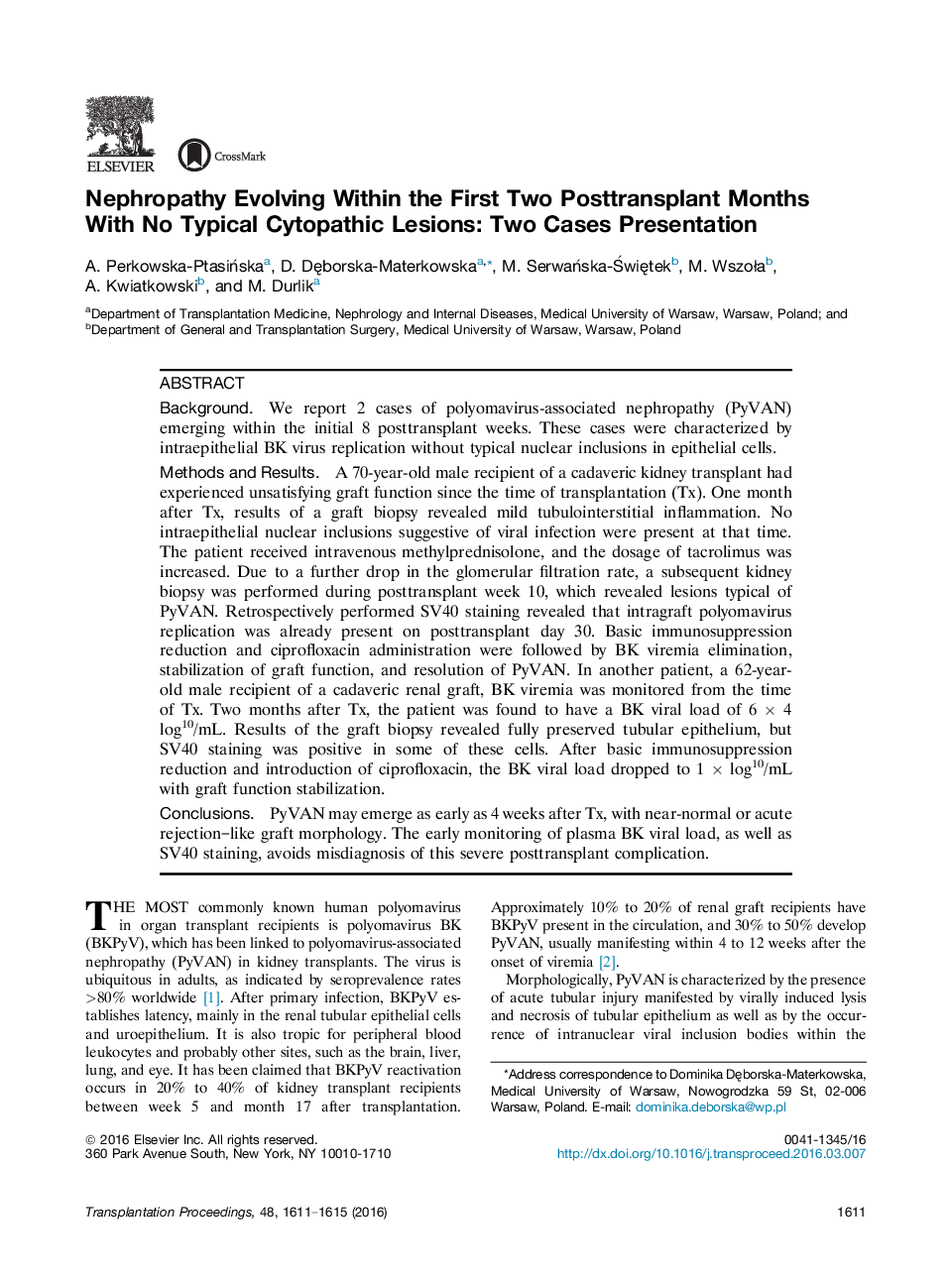| کد مقاله | کد نشریه | سال انتشار | مقاله انگلیسی | نسخه تمام متن |
|---|---|---|---|---|
| 4256082 | 1284510 | 2016 | 5 صفحه PDF | دانلود رایگان |
• Unspecificity of the morphologic manifestation of an early phase of polyomavirus nephropathy.
• Importance of BK viral load monitoring starting in the first weeks after kidney transplantation.
• Importance of the implementation of a routine use of immunohistochemical detection of polyomavirus antigens such as SV40 in each renal graft biopsy.
BackgroundWe report 2 cases of polyomavirus-associated nephropathy (PyVAN) emerging within the initial 8 posttransplant weeks. These cases were characterized by intraepithelial BK virus replication without typical nuclear inclusions in epithelial cells.Methods and ResultsA 70-year-old male recipient of a cadaveric kidney transplant had experienced unsatisfying graft function since the time of transplantation (Tx). One month after Tx, results of a graft biopsy revealed mild tubulointerstitial inflammation. No intraepithelial nuclear inclusions suggestive of viral infection were present at that time. The patient received intravenous methylprednisolone, and the dosage of tacrolimus was increased. Due to a further drop in the glomerular filtration rate, a subsequent kidney biopsy was performed during posttransplant week 10, which revealed lesions typical of PyVAN. Retrospectively performed SV40 staining revealed that intragraft polyomavirus replication was already present on posttransplant day 30. Basic immunosuppression reduction and ciprofloxacin administration were followed by BK viremia elimination, stabilization of graft function, and resolution of PyVAN. In another patient, a 62-year-old male recipient of a cadaveric renal graft, BK viremia was monitored from the time of Tx. Two months after Tx, the patient was found to have a BK viral load of 6 × 4 log10/mL. Results of the graft biopsy revealed fully preserved tubular epithelium, but SV40 staining was positive in some of these cells. After basic immunosuppression reduction and introduction of ciprofloxacin, the BK viral load dropped to 1 × log10/mL with graft function stabilization.ConclusionsPyVAN may emerge as early as 4 weeks after Tx, with near-normal or acute rejection–like graft morphology. The early monitoring of plasma BK viral load, as well as SV40 staining, avoids misdiagnosis of this severe posttransplant complication.
Journal: Transplantation Proceedings - Volume 48, Issue 5, June 2016, Pages 1611–1615
